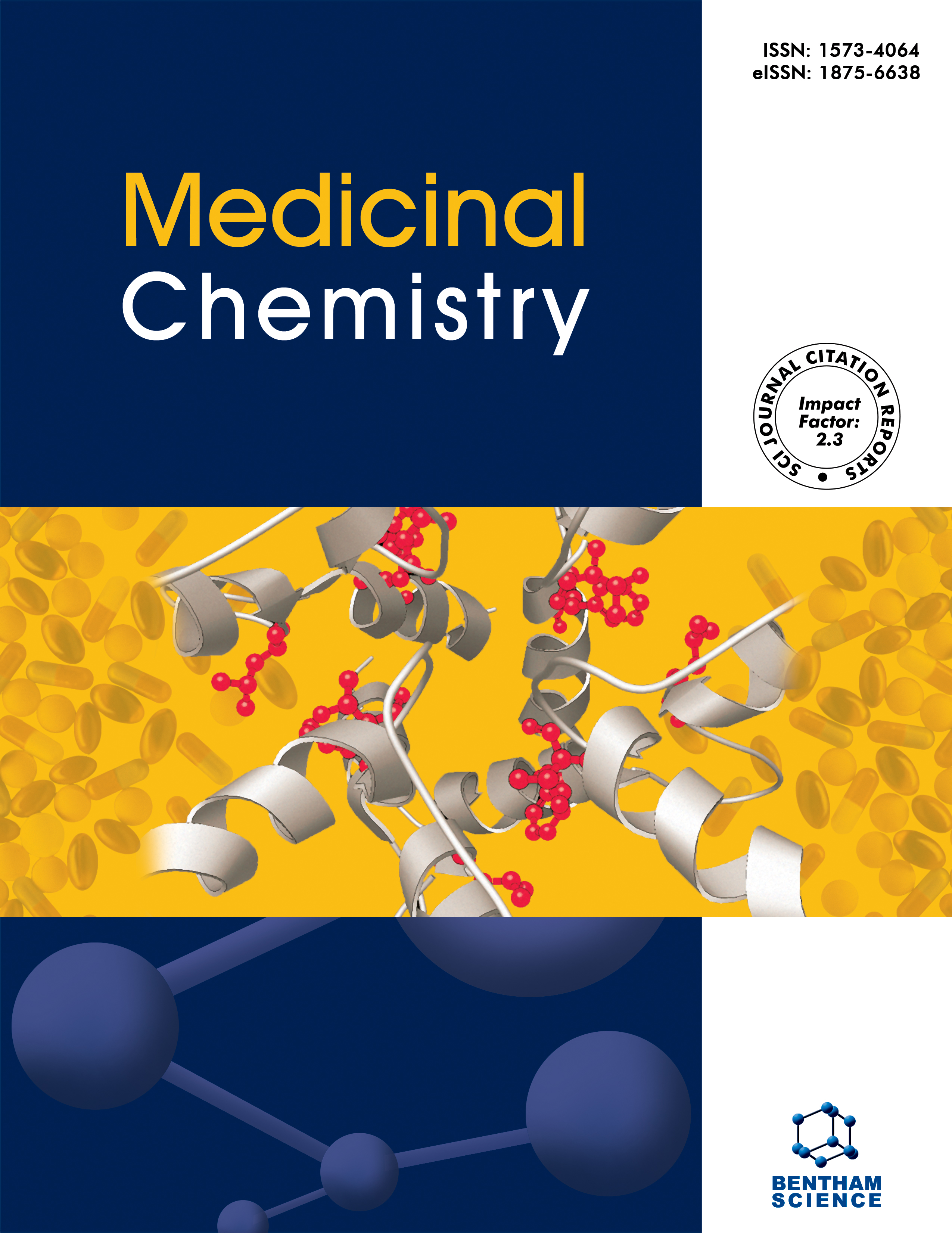- Home
- A-Z Publications
- Medicinal Chemistry
- Previous Issues
- Volume 12, Issue 2, 2016
Medicinal Chemistry - Volume 12, Issue 2, 2016
Volume 12, Issue 2, 2016
-
-
Basic Mechanisms in Atherosclerosis: The Role of Calcium
More LessIn the beginning, atherosclerosis was considered to be the result of passive lipid accumulation in the vascular walls. After tremendous technological advancements in research, we are now able to almost admire the complexity of the atherosclerotic process. Atherosclerosis is a chronicinflammatory condition that begins with the formation of calcified plaque, influenced by a number of different factors inside the Read More
-
-
-
Altered Calcium Handling in Reperfusion Injury
More LessCoronary Heart Disease (CHD) is the major mortality cause in the Western Hemisphere. Reinstituting blood flow in the acutely occluded coronary vessel became the standard intervention to prevent Myocardial Infarct (MI) progression. Ever since their conception, thrombolysis, Percutaneous Coronary Intervention (PCI) and Coronary Artery Bypass Grafting (CABG) have been at the forefront of CHD treatment, limiting MI size. Read More
-
-
-
Role of Calcium in Platelet Activation: Novel Insights and Pharmacological Implications
More LessPlatelets are involved in haemostasis and vessel integrity under physiologic conditions, and in thrombosis under disease states. Platelet activation upon stimulation with various agonists in vitro and in vivo, is strongly dependent on an increase of intracellular Ca2+ concentration. The latter results from Ca2+ release by the dense tubular system (DTS), and Ca2+ entry from the extracellular space. Recent advances in identific Read More
-
-
-
Calcium Ions in Inherited Cardiomyopathies
More LessInherited cardiomyopathies are a known cause of heart failure, although the pathways and mechanisms leading from mutation to the heart failure phenotype have not been elucidated. There is strong evidence that this transition is mediated, at least in part, by abnormal intracellular Ca2+ handling, a key ion in ventricular excitation, contraction and relaxation. Studies in human myocytes, animal models and in vitro reconstit Read More
-
-
-
Calcium Homeostasis and Kinetics in Heart Failure
More LessAlthough HF has multiple causes amongst which coronary artery disease, hypertension and non-ischemic dilated cardiomyopathy are the most common, it results in the same final common pathway of neurohormonal activation and multiorgan dysfunction in the context of a salt-avid state. Contemporary pharmacologic HF therapy targets neurohormonal activation at multiple levels with β- blockers, angiotensin converting e Read More
-
-
-
Intra - and Intercellular Calcium Handling in Pulmonary Arterial Hypertension
More LessPulmonary arterial hypertension (PAH) is a serious life threatening disease that leads to right heart failure and death. Elevated pulmonary vascular resistance (PVR) is the main pathophysiological component that leads to elevated pulmonary arterial pressures and increased right ventricular afterload. Increased PVR is related to different mechanisms that include vasoconstriction, proliferative and obstructive remodeling of th Read More
-
-
-
Calcium Handling and Arrhythmogenesis
More LessIntracellular calcium homeostasis plays a fundamental role in the electric and mechanical function of the heart by modulating action potential pattern and duration, by linking cell membrane depolarization to myocardial contraction and by regulating cardiac automaticity. Abnormalities of intracellular calcium regulation disrupt the electrophysiological properties of the heart and create an arrhythmogenic milieu, which pro Read More
-
-
-
Therapeutic Applications of Calcium Metabolism Modulation in Heart Disease
More LessCardiovascular disease is the leading cause of death worldwide and there is extensive research on the pathophysiology of all its clinical entities. Despite the big array of possible therapeutic modalities for cardiovascular disease, there is still a big necessity to develop novel treatments that will augment our strategies for tackling the burden of cardiovascular disease and decrease morbidity and mortality. A major player in both t Read More
-
-
-
Synthesis of New Harmine Isoxazoles and Evaluation of their Potential Anti-Alzheimer, Anti-inflammatory, and Anticancer Activities
More LessAuthors: Insaf Filali, Anis Romdhane, Mansour Znati, Hichem B. Jannet and Jalloul BouajilaHarmine 1 was extracted from the seeds of Peganum harmala. From this natural molecule, a new series of isoxazole derivatives with complete regiospecificity were prepared using 1,3-dipolar cycloaddition reactions with various arylnitrile oxides. Harmine and its derivatives were characterized by 1H NMR, 13C NMR and HRMS. The evaluation of their anti-acetylcholinesterase (AChE), anti-5-lipoxygenase (5-LOX), an Read More
-
-
-
New Antimycobacterial Leads from Multicomponent Hydrazino-Ugi Reaction
More LessAuthors: Ekaterina Lakontseva, Ruben Karapetian and Mikhail KrasavinBackground: Previously, modification of isoniazide- and pyrazinamide-derived pharmacophores via the Ugi multicomponent reaction proved to be an effective strategy to obtain efficacious and non-cytotoxic antimycobacterial leads. Objective: To apply the hydrazino-Ugi reaction developed in our group toward modifying these pharmacophores with similar appendages as reported previously; to create hydrolytically more stable Read More
-
Volumes & issues
-
Volume 21 (2025)
-
Volume 20 (2024)
-
Volume 19 (2023)
-
Volume 18 (2022)
-
Volume 17 (2021)
-
Volume 16 (2020)
-
Volume 15 (2019)
-
Volume 14 (2018)
-
Volume 13 (2017)
-
Volume 12 (2016)
-
Volume 11 (2015)
-
Volume 10 (2014)
-
Volume 9 (2013)
-
Volume 8 (2012)
-
Volume 7 (2011)
-
Volume 6 (2010)
-
Volume 5 (2009)
-
Volume 4 (2008)
-
Volume 3 (2007)
-
Volume 2 (2006)
-
Volume 1 (2005)
Most Read This Month
Article
content/journals/mc
Journal
10
5
false
en


